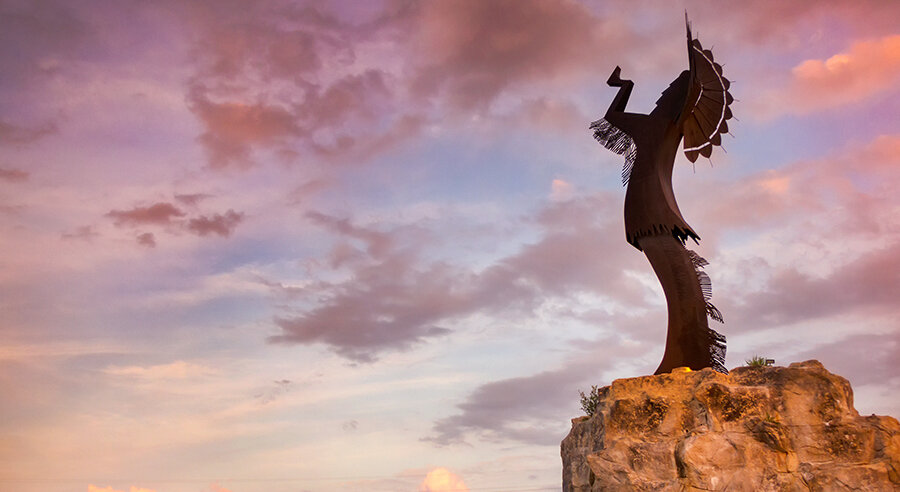Traditionally, the name of the pre-historic Wichita Tribe translates to “People of the South Wind,” the direction of summer’s prevailing wind.
In 1864, Jesse Chisolm and James Mead had come separately to Kansas’s Arkansas Valley to establish trading posts, whose subsequent clientele included such Native American tribes as the Wichita, Arapaho, Kiowa, Shawnee, and Comanche already living in the territory. Chisholm’s trading post was the first building to be constructed in Wichita.
Those facts have been historically well documented; still, something was missing: Native American artifacts. For such a relatively short amount of time—only 150+ years—people should’ve unearthed copious artifacts, such as Clovis points, spearheads, flints, pottery shards, ornaments, and trade beads, but there was—nothing.

However, in 2015, Don Blakeslee, professor of anthropology at Wichita State University, discovered the reason: After years of intensive research, he and his team of graduate students found Etzanoa: The Great Settlement, which is turning out to be the authentic location of the Wichita tribe, who lived in villages in hive-shaped grass lodges.
Etzanoa is a little over an hour’s drive from Wichita to Arkansas City, in southeast Cowley County. Blakeslee surmises that Etzanoa was home to some 20,000 ancestral Wichita Indians, the second-largest settlement in North America in the early 1600s. And there, they found artifacts aplenty, including incised stone monoliths—and the People of the South Wind’s tribal home.
